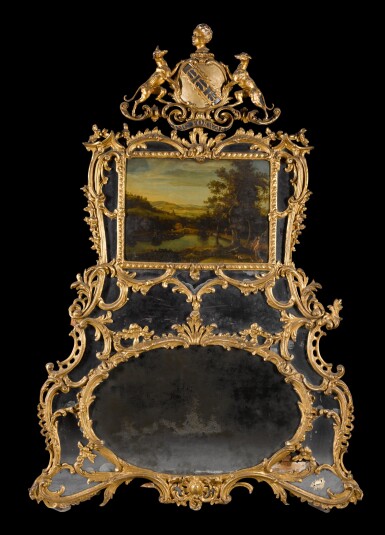Treasures
Treasures

The Property of Archibald Stirling of Keir
A Scottish late George II carved giltwood and gilt-carton pierre overmantel mirror, circa 1760, possibly by William Mathie
Auction Closed
July 6, 02:09 PM GMT
Estimate
60,000 - 100,000 GBP
Lot Details
Description
The Property of Archibald Stirling of Keir
A Scottish late George II carved giltwood and gilt-carton pierre overmantel mirror
circa 1760, possibly by William Mathie
with a painted and gilt armorial and motto surmount for Stirling of Keir, the rococo frame with scrolls, foliage, pierced mouldings and an arrangement of marginal mirror plates, the upper section supporting a rectangular gadrooned frame holding an oil on panel of Tobias and the Angel, Dutch Italianate style and 17th century, above a mirrored oval, losses
188cm. high, 132cm. wide; 6ft. 2in, 4ft. 4in.
Thence by decent.
Keir House
Keir House sits to the north of the Firth of Forth and was the principal seat of the Stirlings of Keir and Cawder. The family are descended from Walter de Striuelying or Striveling who attained land in either the late 14th or early 15th century. It appears that his son Lukas exchanged family land with the Laird of Leslie in Fife around 1448 and acquired Keir in Perthshire. The historic family seat on this land dates from around the second quarter of the 18th century, and the main staircase hall survives from this period of decoration. The present east front, of unusually large width, was the original 18th century primary facade. The present mirror would have been a costly statement of taste and status, to hold a picture from the family's existing collection and almost certainly have been commissioned for one of the important reception rooms at the house. The grand scale of the piece and its impressive armorial surmount are factors which further support this. In the 19th century Sir Bernard Burke was to describe Keir as having 'the air of one of the magnificent princely villas in the vicinity of Rome'1. The contents of the house no doubt impressing Burke as much as its exterior.
